A Complete Beginner’s Guide to Teamfight Tactics
Burnt out from the League of Legends grind? Looking for a game that’ll give your fingers a break but test your brain? This is the beginner’s guide to Teamfight Tactics.
Burnt out from the League of Legends grind? Looking for a game that’ll give your fingers a break but test your brain? This is the beginner’s guide to Teamfight Tactics.
Teamfight Tactics, the second ever title released by Riot Games, has seen a recent rise in popularity.
Twitch Tracker is a website that collects data from Twitch, the massively popular streaming site largely catered to gamers. Per data from this website, Teamfight Tactics (commonly abbreviated to TFT) garnered an average daily view count of 51,900 viewers in October 2021. This was TFT’s highest average count since the initial release of the game in June 2019.
This engagement was also quite consistent relative to the game’s history. The game’s popularity typically spikes when exciting changes are made to the game but nosedives once that excitement fizzles out. With the recent set, this wasn’t the case. In November of 2021, a month after the aforementioned spike, TFT still received an average daily view count of 48,600. This is down about 3,000 from October, yet still higher than any other average daily viewer count since the game’s release.
If you want to know what all the hype is about but don’t know where to get started, this is the article for you! We will be going over the basics and fundamentals of the game in a way that anyone can understand. Reading this won’t instantly make you a TFT pro, but it’ll give you all the tools you need to get started!
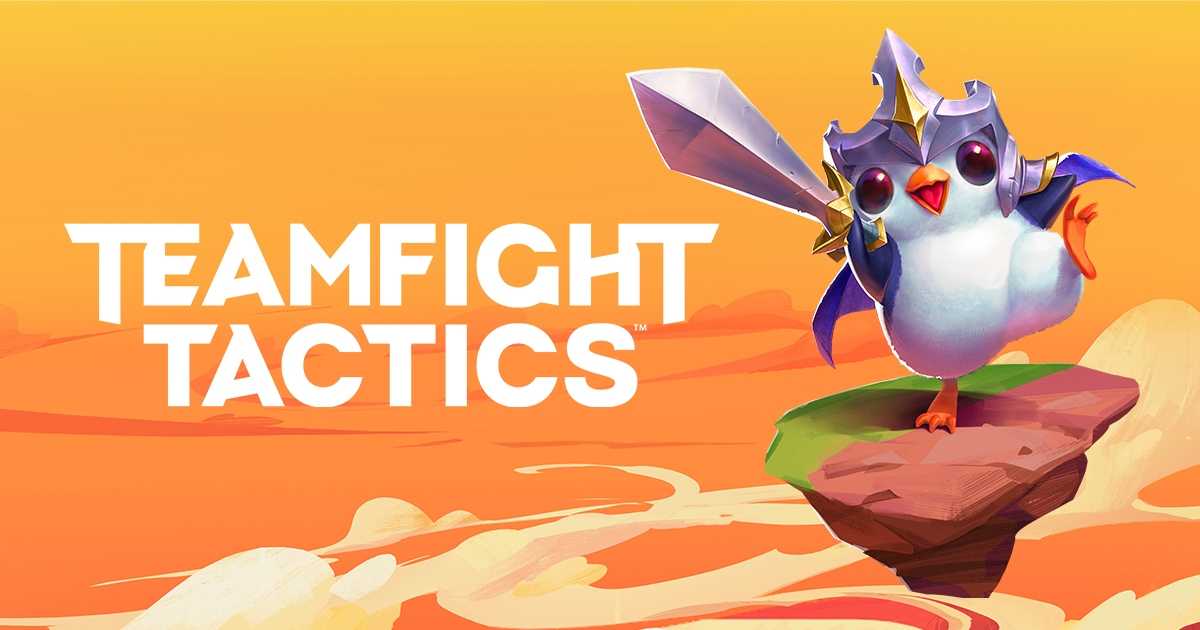
Teamfight Tactics is Riot Games’ take on the Auto Battler genre. Released in mid-2019, TFT was Riot’s first venture into a new game since the original release of their perennial hit League of Legends.
The genre was popularized by Dota Auto Chess, a modified version of Dota 2 released in January of 2019. The core gameplay of Auto Battlers involves repeated, short battles where players have no direct control over their fighting units. These battles are waged on a chess-like board. Players strategically place their fighters on the board with the goal of forming the most powerful team possible.
Dota Auto Chess was an instant phenomenon. Following its success, many developers hopped on the bandwagon to develop their own Auto Battler. To separate themselves from the pack, Riot used the League of Legends universe to make TFT a unique Auto Battling experience. The game itself is essentially a mod of League of Legends, using the same character models, animations, and basic engine as the original title. TFT uses champions, artwork, and even enemies from League of Legends to create the game’s visual aesthetic. This makes it easier for players coming over from LoL to gain familiarity with the game.
Despite their aesthetic similarities, Teamfight Tactics and League of Legends couldn’t be more different. If you are interested in TFT because you are a massive League fan, just know that the games are extremely distinctive experiences. Enjoying League does not necessarily translate to enjoying TFT.
Teamfight Tactics is never stagnant. Every 3 months or so, Riot releases a new “set” of the game. Each set is unique, including significant changes to keep the game fresh and interesting for its player base. Despite the changes, these sets do not alter the game’s core, fundamental gameplay cycle. By knowing the fundamental game mechanics of TFT, you will be able to start playing the game regardless of the set.
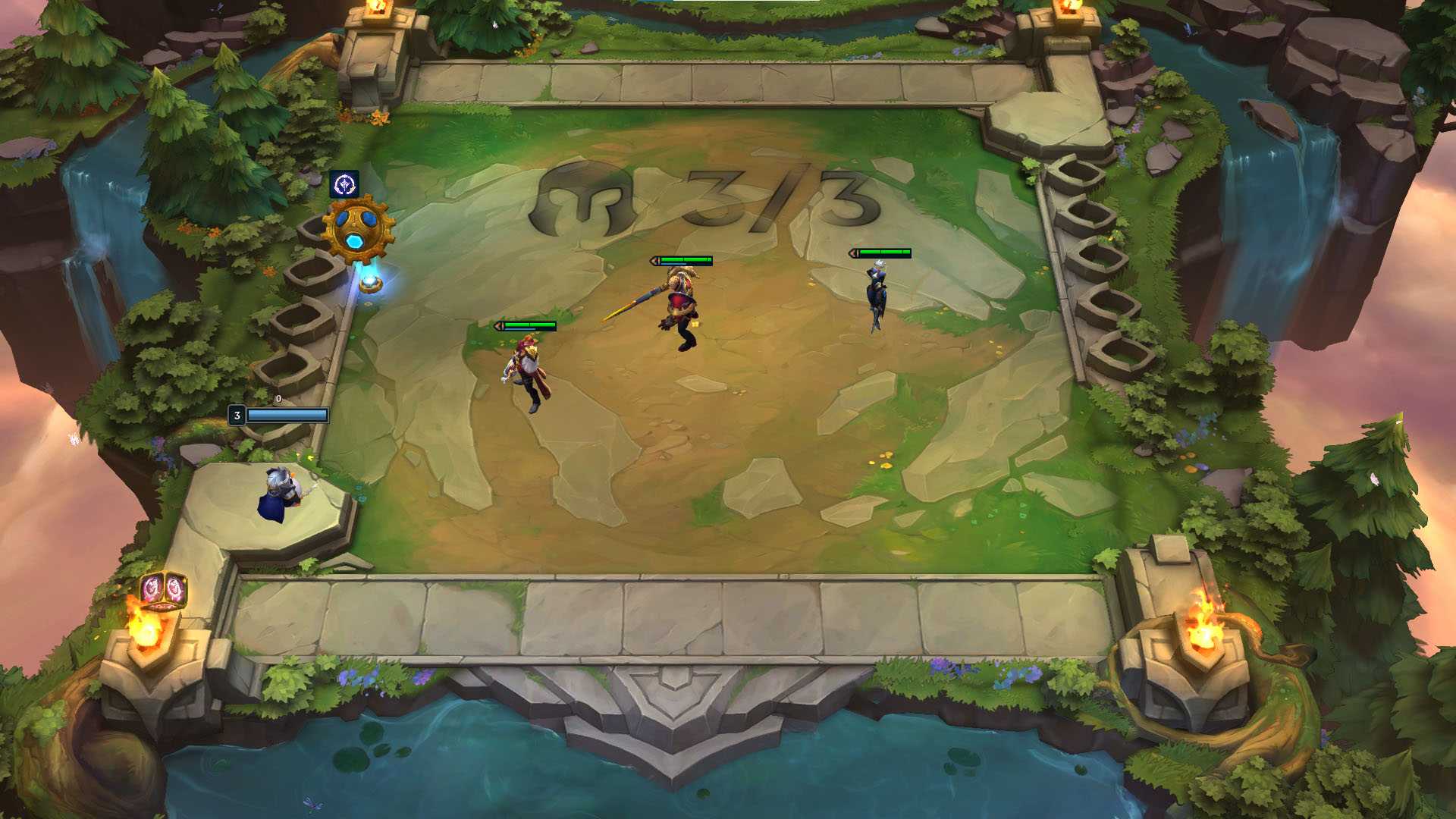
Games of Teamfight Tactics involve 8 players. Each player has access to their own “board” composed of hexagons four rows deep and seven rows across. The player can place down characters on these hexagons that will fight for them. These characters are known as “units.”
The gameplay progresses through short, 1-minute rounds. The first half of these rounds will be spent preparing your board for battle, while the second half will be spent watching your units duke it out. Players will typically battle against other players, but they can also fight AI-controlled monsters in special rounds throughout the game. You win a round by defeating all enemies on the board, and you lose a round when all your units are defeated.
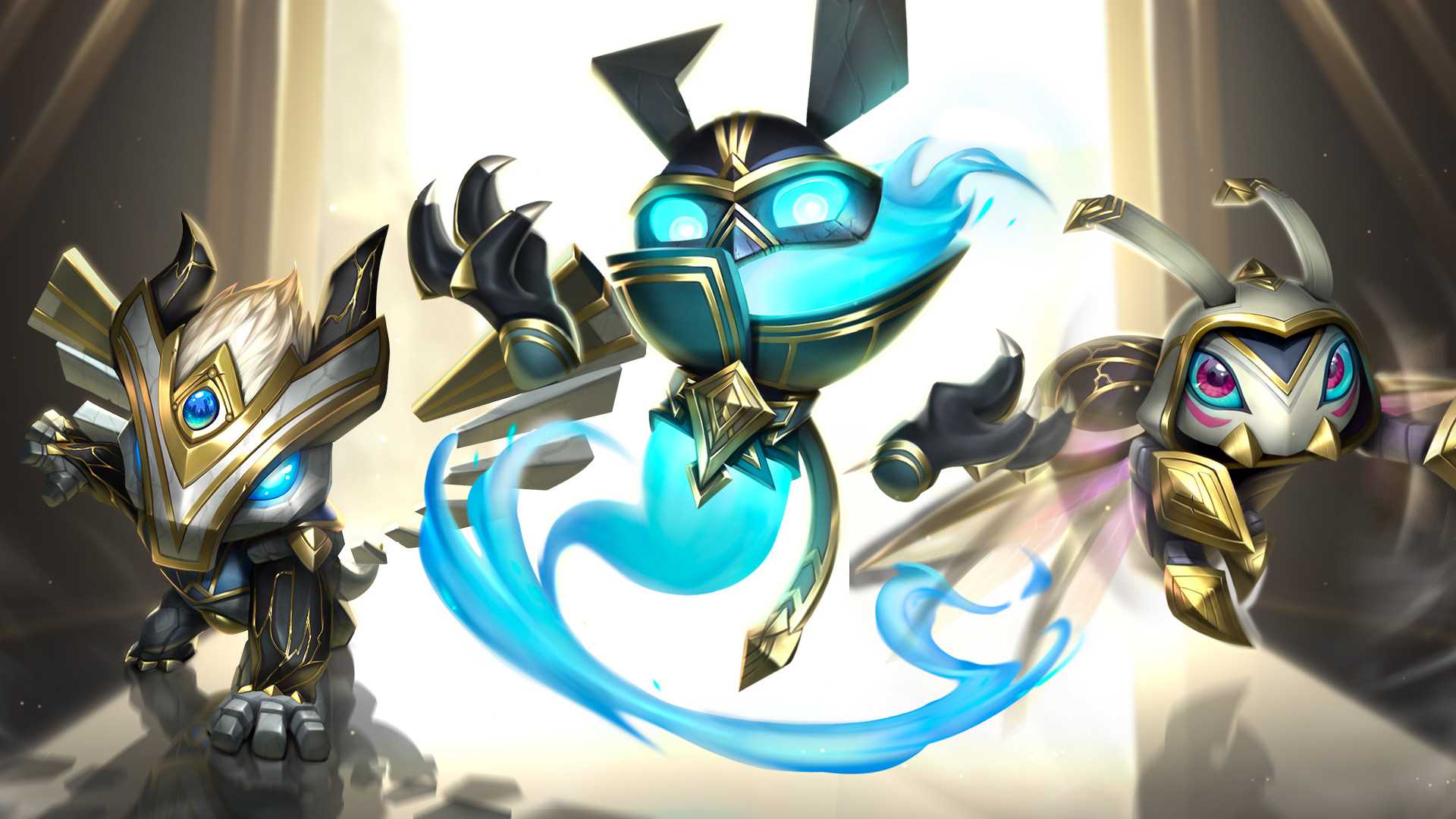
Each of the 8 players is represented by a “Little Legend.” These cute, collectable, and customizable creatures do not fight anything themselves. Every time you lose a battle, your Little Legend loses some amount of health points (HP). Each player begins with 100 HP. When you go below 100 HP, you lose the game. The last player standing is the winner.
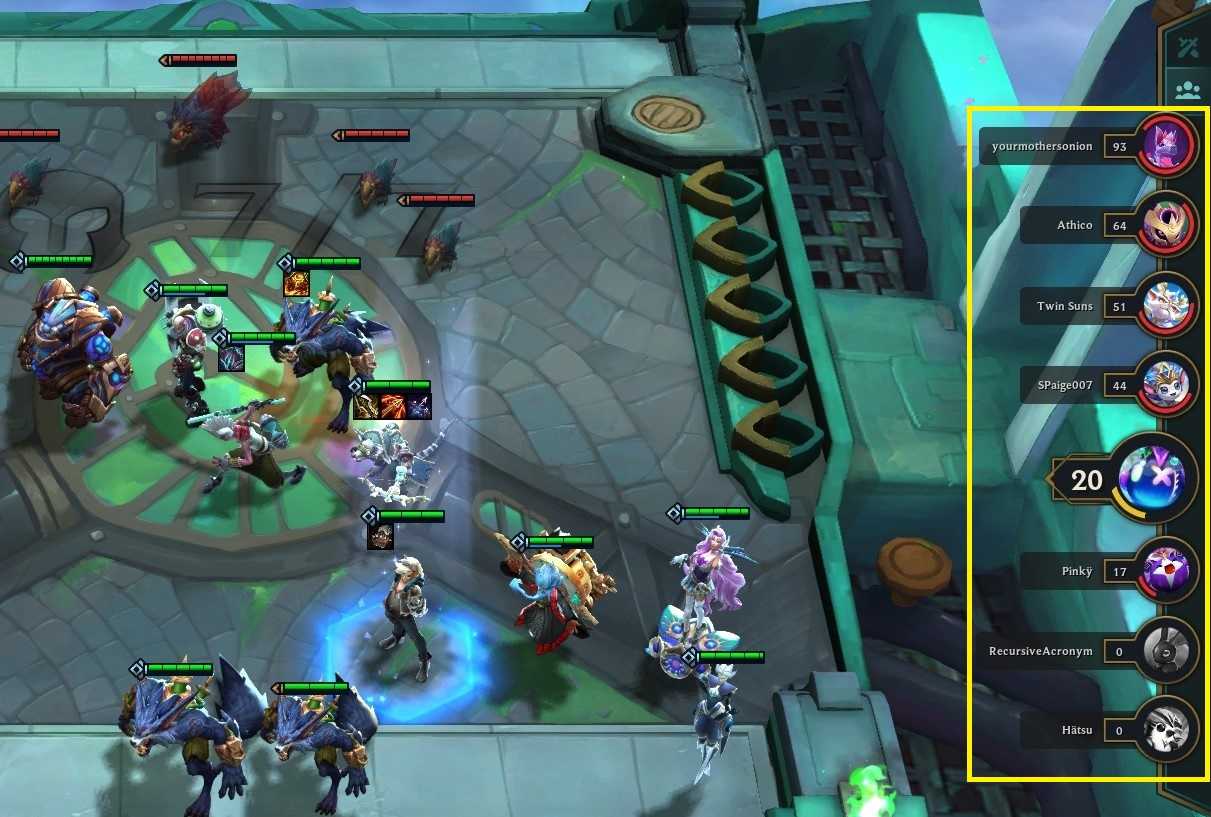
Unlike League of Legends, winning and losing in TFT isn’t so cut and dry. All 8 players finish the game ranked between 1 and 8 because, as the game progresses, players will go below 1 HP at different times. The longer your Little Legend stays above 0 HP, the higher you can possibly be ranked. The last player remaining is crowned the winner. That being said, finishing amongst the last 4 surviving players is considered a positive result because you are in the top half of the lobby. When playing the competitive ranked mode of TFT (which uses a ladder system identical to League of Legends), finishing in the top 4 results in an increase to your rank.
To finish as high as you can in a game of TFT, you must win battles. To win battles, you must obtain and place powerful units on your board.
The gameplay in Auto Battlers is quite unique. Unlike almost all games involving combat, the player has no direct control over the combat. Even turn-based games like Pokémon still allow you to decide what your fighters will do. In TFT, you can only sit back and watch the fight unfold before you.
Units are the powerful characters that fight for you. Each unit has its own unique stats, abilities, and traits that you need to consider when deciding which to place on your board. How do you obtain units? For the most part, you need to use gold to buy them from your shop.

The shop is a core part of TFT gameplay. At the beginning of each round, you will see the portraits of five different units at the bottom of your screen. Each unit costs a certain amount of gold to purchase. Gold is an in-game currency you continuously earn throughout the game. Just like currency in the real world, gold is not infinite. You have to be careful with how you spend it.
You can buy a unit by clicking on their respective portrait. This will send the unit onto your “bench,” the horizontal line of spaces below your board. From here, you can move them onto your board. You can sell units you no longer want by dragging them over the shop. Doing so will entirely refund the gold you spent on the unit.
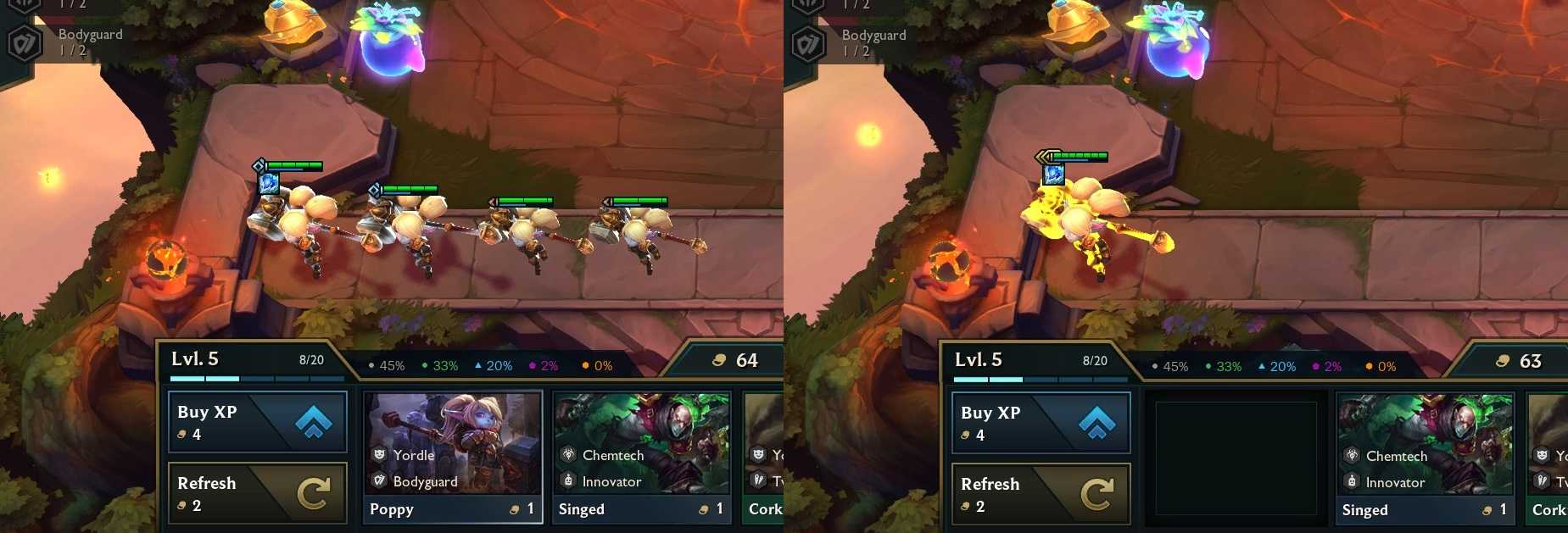
You can also buy more than one copy of the same unit. When you buy three copies of the same unit, they merge to create a “2-star” version of said unit. 2-star units are always better than their 1-star counterparts. If you buy nine copies of the same unit, you can create a “3-star” unit. In the above picture, you can see this in action. I have eight total copies of the Poppy unit, represented by pairs of 2-star and 1-star units. By buying the Poppy in my shop, I merge all of the nine Poppys together to create a 3-star Poppy.
3-star units are the strongest in the entire game. A 3-star unit can greatly increase your odds of winning, though they can be difficult to obtain. Because of the game’s randomness, you are never guaranteed to hit on a 3-star unit.
All units have health points, and almost all units have mana. These are represented above their heads by the green and blue bars respectively. Units take damage to their health bar from enemy units and die when their health bar hits 0. Units deal damage to each other by using “auto attacks” and abilities. Auto attacks, a concept also present in League of Legends, are a unit's most basic attack. Units automatically auto attack the nearest enemy to them, hitting them with a fixed amount of damage every second or so. Units use abilities when their mana bar is fully filled up. Mana bars fill when a unit damages enemies with their auto attack or when they take damage from enemies. Unit abilities can be supportive (healing an ally’s HP), offensive (shooting a rocket at the enemy), or defensive (gaining invulnerability).
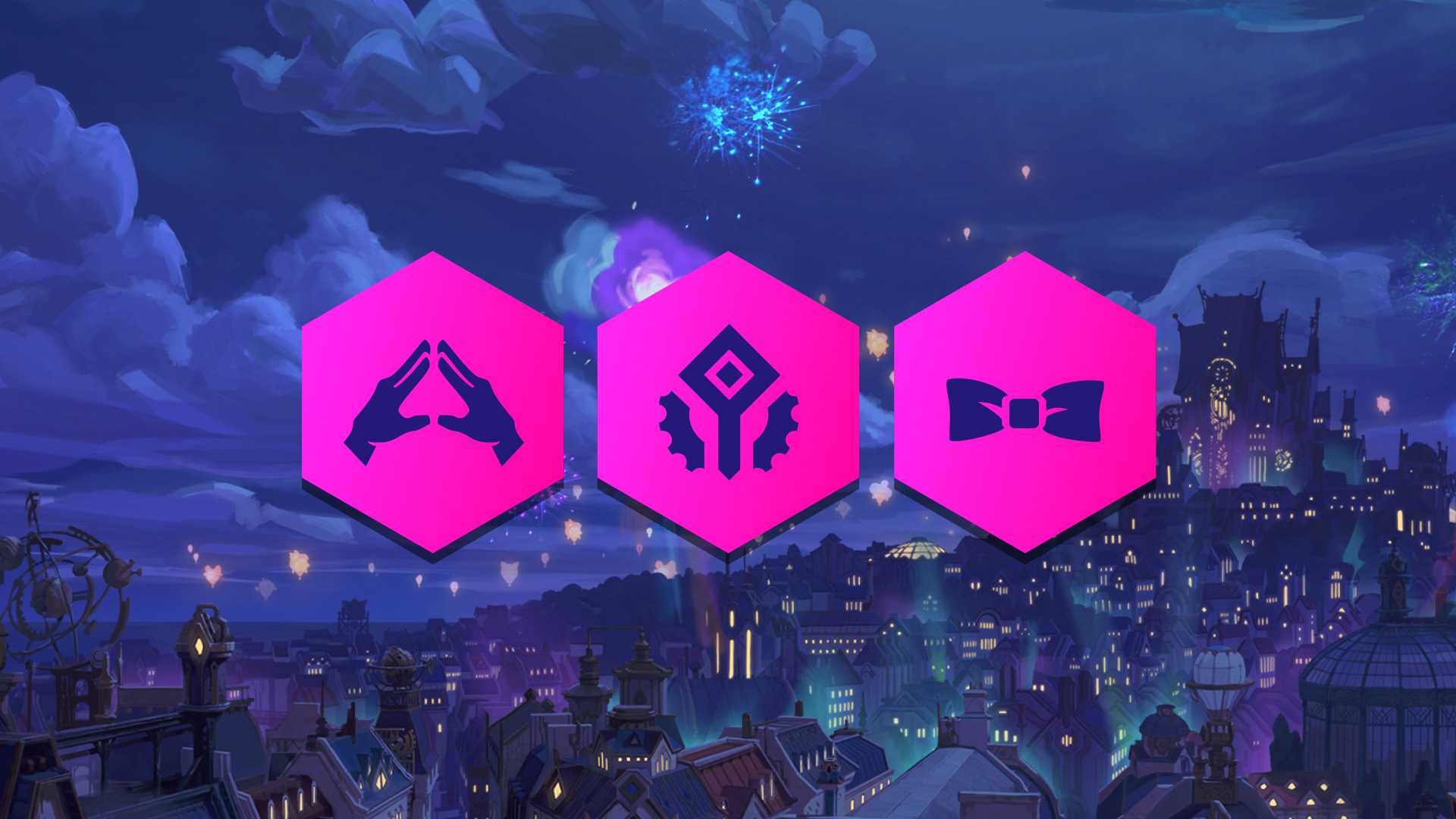
Units also have “classes” and “origins” assigned to them. Classes describe how units fight, while origins represent the theme of the unit. For example, a unit of the assassin class will jump toward the enemy team at the beginning of a battle hoping to kill the opponents quickly. This is very different from the bodyguard class, which gains bonuses to help them protect their allies and absorb lots of damage. Origins bring unique bonuses to units that all focus on a certain theme. For example, the “enforcer” origin is centered around the police/military. Their special bonus locks units in place on the enemy team, which reflects the enforcement theme.
Class and origin bonuses get more powerful as you add more units to your board who share the same class or origin. Repeated units do not add to the stacking bonuses, so you usually don’t want duplicate units fighting on your board. To make your board as strong as possible, you need to select units based on these shared traits.
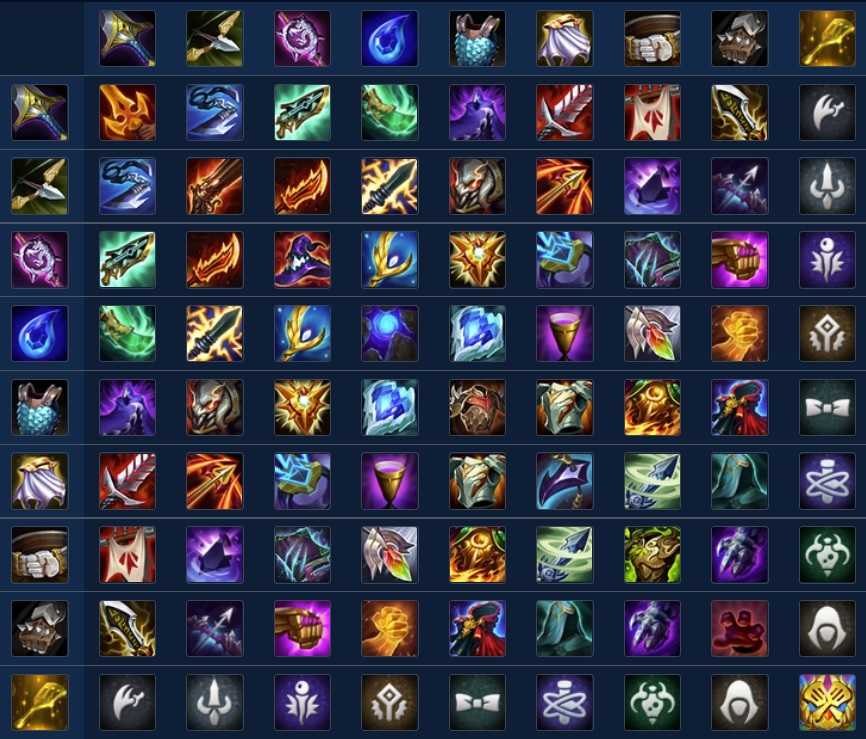
Image courtesy of the League of Legends Wiki on Fandom
If you play League of Legends, you are very familiar with the concept of items. In TFT, you can give units special items that improve them in different, specific ways.
Items are “built” from components. Components are essentially very weak items that improve one basic stat of a unit. To equip a unit with a component, you simply drag the component over to the unit’s in-game model. If you drag two components onto the same unit, they will combine into one full item. These fully completed items give your units powerful boosts that make them much stronger. You must be careful with how you distribute your items, however. Once you give a unit an item, the only way you can remove it (barring rare exceptions) is by selling the unit.
There are two main ways of obtaining items:
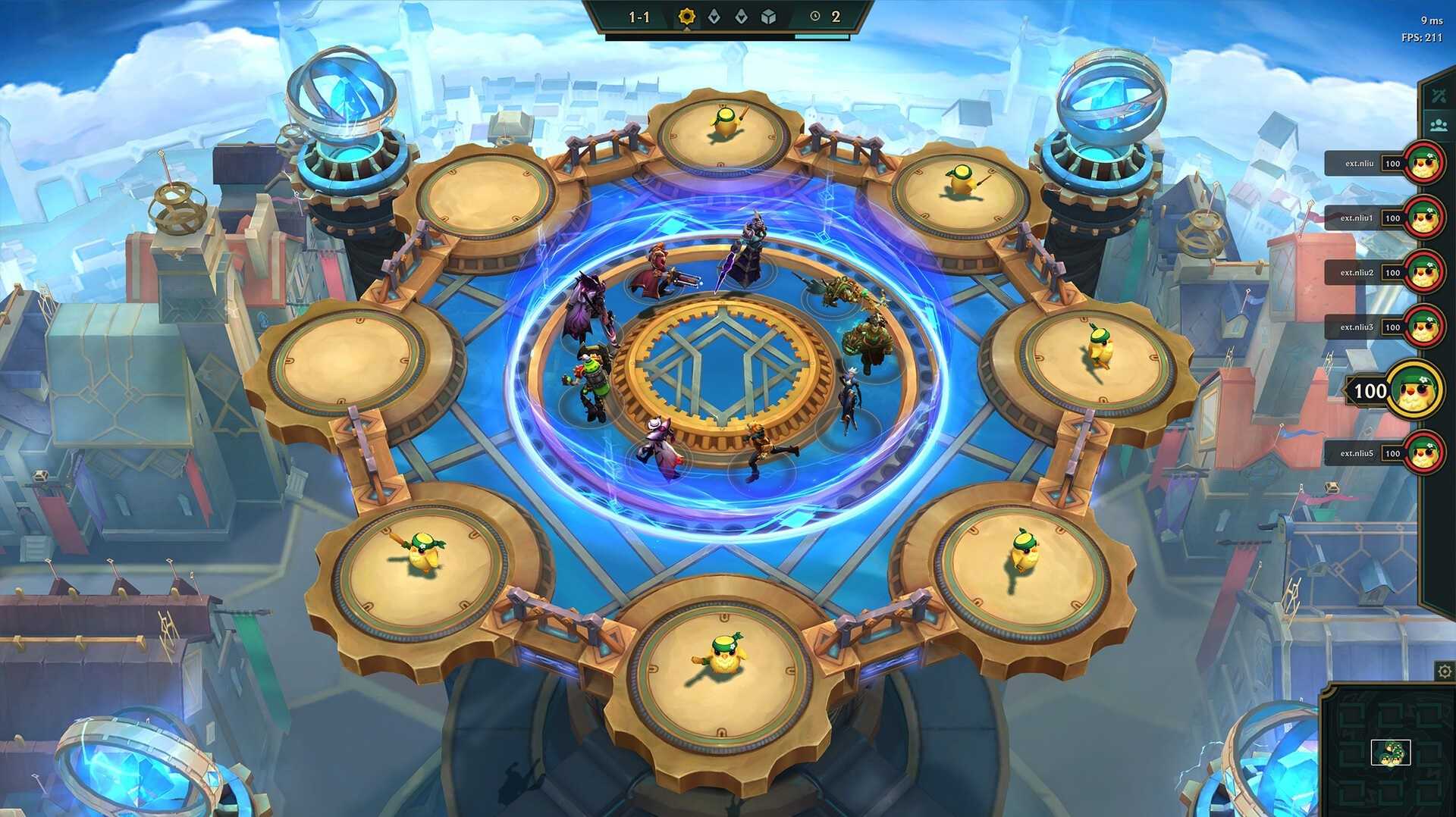
Image courtesy of ArtStation Magazine
At the very beginning of the game, all players enter a special event. This event is called the Carousel, and it repeats every six or so rounds. At the carousel, random units are shown walking around in a circle. Each unit is equipped with a random item. Players can move their Little Legend over one of these units to grab them. These chosen units are then brought back to the respective player’s board with the item they were holding.
The second way to get items is from Player versus Environment (PvE) rounds. These are rounds where your units fight against monsters instead of other players. Defeated monsters drop random components which you can use to strengthen your units. As the game goes on, you can even get fully completed items from these monster fights. These fights can also grant you free units.
There are 9 different components in the game, all of which can be combined with one another to make 45 unique items. Items can grant your units unique bonuses (such as burning enemies near them) and give them raw power through increasing their stats.
What are these stats, exactly? As we already know, units do damage to one another through their auto attacks and abilities. Simply put, the specific amount of damage inflicted is based on each unit’s unique set of stats. These are numbers that represent the strength of a unit in different categories. The higher the number, the more powerful the unit is in that category.
The amount of damage an auto attack does is based on the amount of attack damage (AD) a unit has. The amount of damage a unit’s ability does is typically based on AD or ability power (AP). Items will almost always improve one of these stats. Some units prefer AD, some prefer AP. This is simply dependent on how the unit’s abilities are written.
There are also other stats such as health, armor, and magic resistance. These are all defensive stats. Health gives your unit the ability to absorb more damage, armor generally protects from AD damage, and magic resistance generally protects from AP damage.
Choosing which item to give to which unit often comes down to which stats you want to improve. This may seem very complicated for someone unfamiliar with the system, but it gets easier once you gain more TFT experience.
The last core gameplay mechanic we will discuss is the game’s economy. TFT uses the same currency as League of Legends: gold. Like we mentioned previously, gaining gold is relatively simple. The game just gives it to you!
You gain a set amount of gold - usually 5 - at the beginning of every round. You also gain an extra 1 gold for every 10 gold you have in your reserve. This system rewards you for holding your gold rather than spending all of it. This extra gold, commonly referred to as “interest,” caps out at 50. If you have 60 gold in your reserve, you still only gain 5 extra in the next round. You can also get extra gold by winning or losing many battles in a row.
What do you use this gold for? Well, you can spend it on three things:
We spoke about where you can buy units previously: the Shop. Every unit has a different price based on how strong and rare they are. These prices range from 1 to 5 gold. The shop, however, only gives you five unit options to choose from. What happens if you don’t see the unit you want? In this case, you can spend 2 gold on a reroll. This randomizes the shop to show you five more units.
Teamfight Tactics also has a level system, a critical aspect of the game. Every player starts at Level 1. By gaining experience points, players can reach all the way to Level 9. You gain 2 experience points for free every round, and you can spend 4 gold to gain 4 experience points. Every level requires much more experience points to reach than the last.
Why would you want to level up? For two reasons:
Each level you gain adds one more unit that you can place onto your board to fight for you. At level 1 you can only place one of your units on the board. At level 9, you can place 9 different units on the board. As you can imagine, having one more unit than the opponent is a huge advantage.

The other benefit of being a higher level is that you have a higher chance of obtaining strong units. When you are a low level, you will mainly be offered units that cost 1, 2 or 3 gold. These units can be powerful, but they are no match for stronger units that cost 4 or 5 gold. The strongest units in the game - those that cost 5 gold - won’t even be available to purchase until you hit level 7. But when you’re Level 7, you only have a 1% chance of getting one of these super-strong units offered to you in your shop. This percentage increases at Level 8 and Level 9, but it costs a lot of gold to reach those levels. This is a conflict that the player must constantly manage.
The augment system is the only gameplay component we will focus on that has not been a core feature throughout TFT’s lifespan. Released late in 2021, Set 6 of TFT added “augments” to TFT. This feature, likely responsible for the increase in the game’s popularity, revolutionized the game.
In three different rounds spread throughout the game, each player is offered three random augments to choose from. These augments are powerful bonuses that help the player win the game. The player can only choose one of the three offered to them.
These augments make every game of TFT feel fresh and exciting. Your choice of augment alters the way you play the game. You can get an augment that gives you a random completed item, makes all of your assassin units stronger, or one that just gives you a bunch of gold. Because there are so many different augments and they are offered randomly, you never know which one you’ll get. This means you are rewarded for constantly adapting throughout the game.
The popularity of augments means that the mechanic is likely here to stay. In the recent TFT Dev Drop, Riot hinted that Set 7 will include the augment system or something very similar to it. With augments remaining a part of TFT for the foreseeable future, they are a key mechanic that any aspiring TFT player needs to be familiar with.
TFT can seem very unintuitive for those unfamiliar with the genre. Hopefully, this guide was able to demystify the game and provide a starting point from which you can launch your TFT journey. Those familiar with League of Legends might have a slightly easier time getting started, but anyone can begin playing if they’re willing to learn.
So, what are you waiting for? Open your LoL client and start playing! We wish you luck on your endeavor into the chaotic world of Teamfight Tactics.